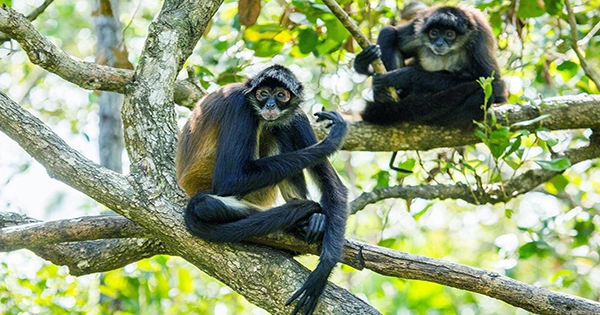Humans, like primates, give birth at their least active period of the day. For us, that is in the middle of the night, although it is unknown why most kids are born at this time. New research on Vervet monkeys has discovered that there may be a link between body temperature and birthing window, with the birthing window coinciding with when primates’ bodies are at their coldest. The authors of the current study, which was published in Biology Letters, looked to wild Vervet monkeys (Chlorocebus pygerythrus) for clues about birthing habits.
To obtain a clearer picture of what was going on, they took the body temperature of 24 females when they gave birth during their observation period. The moms’ body temperatures dropped during labor, only to rise once the little monkeys were born, according to their findings. The link between birth and a lower temperature could bolster statistics showing that most primate babies are born during the day’s inactivity when the environment and core body temperature are cooler.
“Our findings show that the time of primate birth may have substantial thermal repercussions,” the authors noted in a statement. “We show that the timing of night-time births synchronizes with both the mother circadian cycle and the ambient variables, which together maximize thermoregulatory efficiency during the delivery process, using cutting-edge bio-logging technology.”
Because humans are primates, it is possible that monopolizing thermal efficiency has a role in human birth patterns as well. For humans, this would be at night, but because body temperature is tied to circadian rhythm rather than the location of the sun, nocturnal primates’ best birthing window is likely to occur during the day while they are resting. When did you come into this world? A 2018 study indicated that 71.5 percent of spontaneous births occurred in the overnight and early morning hours, mostly between midnight and 6 a.m., so if you were a daytime surprise, you may have missed the notice.
Understanding why these birthing patterns occur goes beyond curiosity; it can help us manage parent and infant safety during less-than-perfect births by setting the best conditions for labor as determined by our biology and physiology. “Not only do our findings provide new insights on the thermal consequences of delivery and the development of primate birth hour,” the scientists concluded, “but they may also provide an evolutionary explanation for some of the health problems associated with human birth.”
















